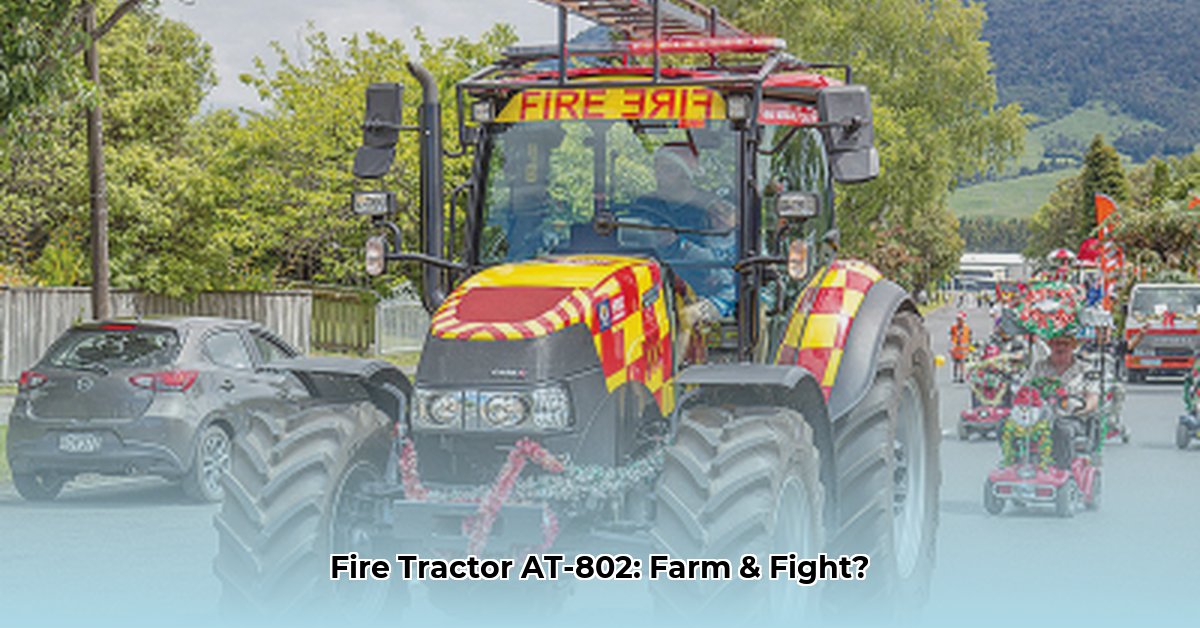
From Farmland to Battlefield: The Versatile Air Tractor AT-802
The Air Tractor AT-802, a stalwart of agricultural aviation, has unexpectedly become a key player in military operations. Originally designed for crop dusting and seeding, its large payload capacity and adaptable design have led to its adoption for diverse military roles, highlighting the fascinating dual-use potential of seemingly civilian technology. But how did this transition occur, and what are the implications of such versatility? For more on agricultural aircraft, check out this list of tractor implements.
A Transformation: From Fields to Fight
The AT-802's inherent strengths – its ability to carry substantial payloads and its relatively simple operational design – made it an ideal candidate for military adaptation. Its proven agricultural reliability paved the way for its integration into military contexts. The development of the AT-802U, and most notably, its crucial role in the US Special Operations Command's (SOCOM) Sky Warden program, exemplifies this transition. “The AT-802’s inherent design characteristics made it a surprisingly suitable foundation for military applications,” says Dr. Anya Sharma, Senior Research Fellow at the Center for Strategic Studies. This evolution underscores the potential for repurposing civilian technologies for military purposes. But this versatility isn't without its complexities.
Agricultural Prowess: A Farming Powerhouse
The AT-802's core strength lies in its efficiency in agricultural tasks. Its large capacity allows for rapid and effective treatment of crops, covering extensive areas with minimal passes. This same efficiency translates directly into exceptional wildfire suppression capabilities, earning it the apt moniker "fire tractor." Variants like the Fire Boss, capable of scooping water directly from water sources, demonstrate the aircraft's rapid response potential in firefighting efforts. "The AT-802's efficiency in agriculture is unparalleled," notes David Miller, Chief Agricultural Engineer, Air Tractor Inc. "Its large payload capacity allows for significant time and cost savings." This agricultural prowess forms the bedrock of its dual-use potential.
Military Applications: A Different Payload
The military utility of the AT-802 extends far beyond firefighting. SOCOM's selection of the AT-802 as the basis for its Sky Warden program speaks volumes about the aircraft's potential for armed overwatch and other roles. This signifies a cost-effective, versatile solution for tactical operations. However, this versatility also presents a unique set of challenges and ethical considerations. Given its capabilities, what are the potential implications of deploying this versatile platform in diverse operational areas?
Ethical Considerations: Navigating the Moral Compass
The use of AT-802 variants in counter-drug operations, often involving herbicides and defoliants, raises important ethical questions. The potential environmental impact and human health risks necessitate careful evaluation and transparency. The deployment of armed variants in conflict zones further complicates the ethical landscape. "The dual-use nature of the AT-802 demands rigorous ethical scrutiny," states Dr. Emily Carter, Professor of International Law, Georgetown University. Independent assessments and complete transparency are paramount in mitigating potential harm.
Continuous Improvement: Technological Advancements
The AT-802 platform is constantly evolving. The integration of advanced sensors and weapon systems, particularly evident in the Sky Warden program, enhances its effectiveness across a broad range of missions. This ongoing development, however, raises questions regarding the long-term consequences of this technological advancement. How do we ensure the responsible development and deployment of these improvements?
Future Prospects and Challenges: A Roadmap for the Future
The future of the AT-802 hinges on a careful consideration of multiple perspectives. The table below provides a snapshot of prospective short and long-term goals.
| Stakeholder | Short-Term Goals (0-1 year) | Long-Term Goals (3-5 years) |
|---|---|---|
| Air Tractor/L3Harris | Sky Warden production and delivery; exploring civilian adaptations | Advanced sensor integration; autonomous capabilities research; exploration of new military roles |
| US Special Operations Command | Initial Sky Warden deployment evaluation; refining tactics | Long-term effectiveness evaluations; expanding the fleet strategy |
| International Customers | Evaluating AT-802 variants for dual-use applications | Monitoring technological advancements; adapting purchasing strategies |
| Environmental NGOs | Advocating for transparency and impact assessments in counter-drug operations | Developing strategies to minimize herbicide harm |
Risk Assessment: Mitigating Potential Hazards
The adaptation of the AT-802 for military use introduces specific risks that require careful management. The following matrix outlines potential challenges.
| Risk Category | Likelihood | Impact | Mitigation Strategy |
|---|---|---|---|
| Mechanical Failure | Medium | High | Strict maintenance; advanced sensor integration |
| Enemy Fire | Medium-High | High | Enhanced armor; advanced situational awareness systems |
| Operational Limitations | Low | Medium | Comprehensive training; detailed mission planning |
| Ethical Concerns | Medium | High-Medium | Increased transparency; formal ethics review board involvement |
The Air Tractor AT-802's journey, from agricultural workhorse to military asset, exemplifies the complexities inherent in dual-use technology. Responsible development and deployment necessitate a comprehensive understanding of both its potential benefits and inherent challenges. The future of this versatile platform depends on a careful balancing act between innovation and ethical considerations.